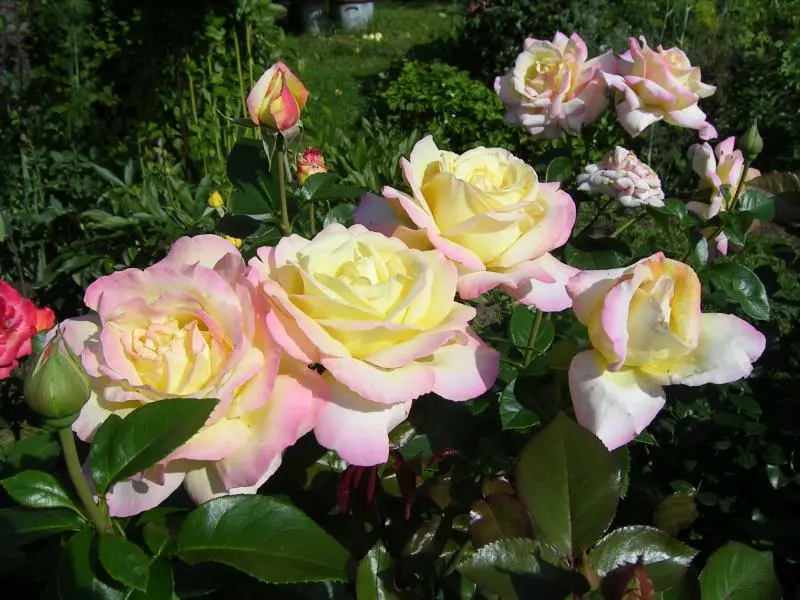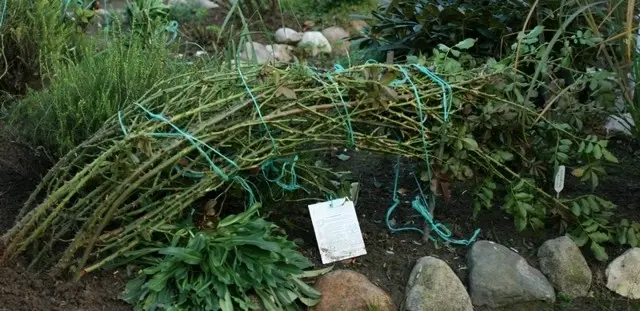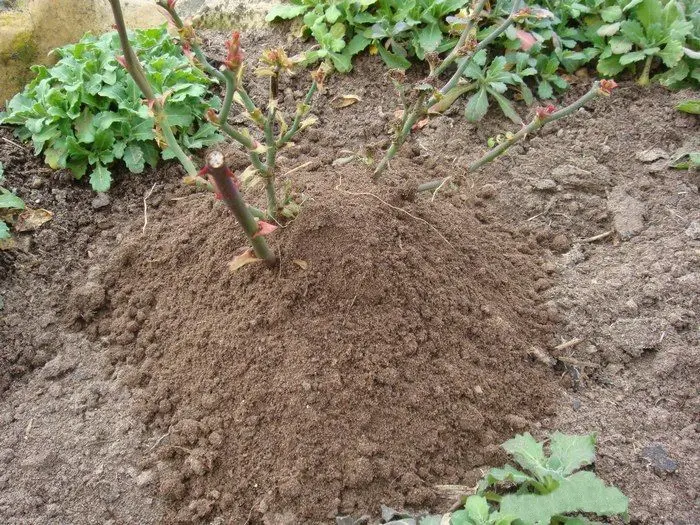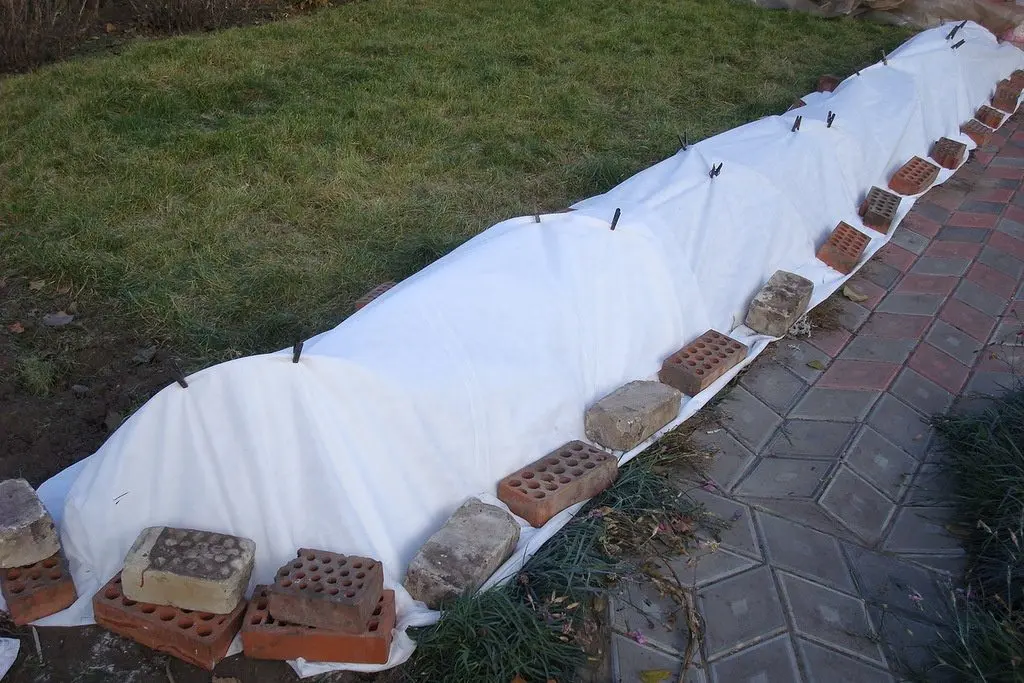Contents
In winter, the queen of flowers is going through a period of rest, it is necessary to help her not only prepare for it, but also ensure a safe winter holiday. Not everyone knows how to properly cover roses for the winter so that they can winter without loss. Novice flower growers are often interested in how to prepare roses for winter, when to cover roses in different weather and climate conditions, at what temperature it is worth covering roses with special materials, how and how to cover roses for the winter. After reading the answers to all these questions, you will know exactly how to save roses in winter.
How to prepare flowers for winter
Preparing roses for winter, as experts like to repeat, begins with their planting. It is necessary to think about this not only when choosing a place in the garden, but also when buying a seedling. It is better to choose varieties that can survive the cold if your area experiences severe frosts, and greenhouse roses are generally not advisable to buy if you are going to grow them outdoors.
Different groups of roses differ from each other in their attitude to frost, so park or landscape roses endure winter much easier than hybrid tea or any exotic ones. Even if the seller guarantees that wintering of roses can take place without shelter at all, it is worth considering how to insulate roses for the winter, the first in their life on the site. Maybe then hilling with earth will be enough, but for the first time warming is necessary. If you do not know what variety grows on the site, and whether it is necessary to cover roses for the winter, it is still safer to cover roses for the winter.
Preparation for winter begins in mid-summer, when the plants stop feeding with nitrogen. By the end of August, it is advisable not to cut all the flowers, but leave a few so that the fruits ripen – this will set the plant to complete the growing season, to prepare for wintering, new shoots will no longer form, which still do not have time to ripen before the onset of cold weather. Care for roses in autumn is somewhat reduced, since September it is no longer necessary to loosen the ground around the stems for the same reason, so that new buds do not wake up and new shoots do not grow, watering practically stops.
In early September, an inspection of the bushes will allow you to draw a conclusion about their condition and decide how to prepare roses for the winter further. The presence of young shoots and red leaves indicates poor readiness for a dormant period. Pruning such shoots before sheltering for the winter is an obligatory step in preserving the plant.
Leaving in the fall comes down to pruning the leaves and harvesting them, very rare watering and even more rare top dressing. With the onset of cold weather, all leaves are gradually removed, shoots are pruned.
In hybrid tea roses and floribunda, in the fall they do not count how many shoots should remain for the next year, they simply remove the damaged ones and shorten everything so that the bush fits completely under the shelter. Climbing, ground cover and scrub varieties are shortened even more carefully, because all their beauty depends on the length of the shoots, and excessive pruning can even deprive them of flowering next year. Pruning should be completed with the onset of sub-zero temperatures, all cuts should be treated with garden pitch, all leaves and branches should be removed from under the bush, it is advisable to always burn them in order to exclude fungal infections.
These delicate flowers perfectly tolerate temperature drops to -5 or even -8 degrees, such frosts do not destroy, but only harden plants. Shelter of roses for the winter is made when the thermometer drops even lower, and before that, preventive treatment of roses with Bordeaux liquid or iron sulphate will not interfere.
Video “Preparing for winter”
From the video you will learn how to prepare flowers for the winter period.
What to feed in autumn
Nitrogen fertilizers contribute to the growth and formation of new shoots, which is why they are no longer applied in the second half of summer, but plants need potassium and phosphorus for general health, strengthening immunity, and ripening of shoots.  It is advisable to make a few more top dressings, give the plants superphosphate, boric acid, potassium sulfate or potassium monophosphate. Top dressing is applied simultaneously with watering, mineral fertilizers are diluted with water, separate watering is no longer performed.
It is advisable to make a few more top dressings, give the plants superphosphate, boric acid, potassium sulfate or potassium monophosphate. Top dressing is applied simultaneously with watering, mineral fertilizers are diluted with water, separate watering is no longer performed.
How to warm flowers for the winter and when
Roses have to be cared for all year round. What to do with roses in summer is understandable, in autumn all thoughts are directed to how to save roses for the winter. In winter, it is important to ensure that dew or condensate does not collect under cover, because plants rarely freeze out, periods of temporary warming do more harm to them, during which dormant buds wake up, moisture makes its way to the shoots if there is no access to fresh air.
The nature of wintering is determined by the weather conditions of a particular region and the winter hardiness of the variety. So, in the south, roses usually winter without shelter, it is enough just to spud them with earth, sometimes even cover them with dry leaves. They do it in November. In the Leningrad region, the middle lane, the Volga region, roses begin to close in the second half of October, when constant frosts come, and the thermometer drops below -8 degrees. For the winter in Siberia, in the Urals, all roses are covered, they do it very carefully in September. The easiest way is to dig up the bushes, transplant them into tubs and take them to the basement, but you can take care of the roses for the winter and in the open field.
Covering material for roses for the winter is used very different. This is spruce branches, dry leaves, kraft paper, lutrasil or other similar modern material. From above, insulation is usually covered with plastic wrap to protect it from moisture. The frame for the structure can be wooden (but not cardboard) boxes, metal wire, boards or wooden shields. Bushes are spudded to a height of approximately 20 cm with earth that was brought from the garden, but not from under rose bushes – it may contain pathogens of fungal diseases or larvae of harmful insects. Experienced flower growers do not recommend using sand or peat for hilling, because they easily absorb moisture, and this is not necessary at all for the winter, you can take humus, compost, but it must be covered with earth from above.
If the shoots are bent to the ground, then they are not placed on bare ground, but on something that does not allow moisture to pass through – boards, polystyrene, spruce branches. All wooden elements should be treated with an antiseptic, some are even treated with insecticides in order to protect plants from pests. It should be noted that coniferous spruce branches perfectly protect against rodents, in general, from all parasites, but dry leaves attract mice. The bent lashes are fixed with special pins made of wire.  Some bushes, especially shrabs, begin to bend down in the summer, gradually lowering them lower and lower to the ground, tying them to pegs, so that before the time of warming comes, their tops are as close as possible to the vaccination points. Some standard roses can also be bent or laid on their side, digging on one side. Usually this can only be done with young plants, the older they get, the less successful it is.
Some bushes, especially shrabs, begin to bend down in the summer, gradually lowering them lower and lower to the ground, tying them to pegs, so that before the time of warming comes, their tops are as close as possible to the vaccination points. Some standard roses can also be bent or laid on their side, digging on one side. Usually this can only be done with young plants, the older they get, the less successful it is.
Warming methods
Warming methods depend on the expected cold weather. In the southern regions, you can very often get by with just pruning and hilling the bushes with earth. Caring flower growers cover exotic varieties with dry leaves, cover with spruce branches. Where severe frosts or difficult weather conditions are expected, implying alternation of frosts with thaws, the best option is an air-dry shelter, when a frame covered with insulating material is installed around a bush or a whole flower bed. Such a shelter perfectly maintains a comfortable temperature from zero to +4 degrees, does not allow snow or wind to damage the shoots.  And during thaws, it can be slightly opened to ensure air circulation, the roses are ventilated, moisture is not collected inside, and the overwintered bush begins a new growing season healthy and strong.
And during thaws, it can be slightly opened to ensure air circulation, the roses are ventilated, moisture is not collected inside, and the overwintered bush begins a new growing season healthy and strong.
After hilling the roots, bending down the shoots, laying them on a waterproof base around a bush (or several), a frame is constructed so that at least 40 cm of free space remains between the roses and the covering material.
If frosts are expected to be more than -25 degrees, then it is worth digging a bush around the perimeter on the floor of a spade bayonet and deepening the walls of the shelter into the ground. You can build walls of foam, wood, plastic, fill the entire space around the shoots with dry leaves, cover with spruce branches on top, and build a strong roof over this and cover with lutrasil, and on top with a film.
Lutrasil or other insulation is fixed on the frame so that the wind cannot move it, but leave a place where it is easy to open it if necessary. A film is laid on top to protect it from moisture, pressed on the ground with stones, boards or just earth. Shelter for roses can be made from wooden shields placed in a hut, and insulating material can be placed on top. Pegs are driven into the ground to fix the shields. The frame can be of any shape convenient for building a shelter or for decorating a garden in winter.
Such a shelter is prepared gradually, the roses are closed when the ground around is dry, part of the structure is left open for ventilation, completely closed with the onset of a constant temperature below -10 degrees. You also need to open it gradually, airing the shelter with each thaw.
Climbing roses are usually removed from the trellis, stacked on the ground, placing a waterproof substrate under them, but sometimes they are covered with trellises.
Standard plants that could not be placed are covered in their usual position. The shoots are collected together, tied together compactly, wrapped with burlap, lutrasil, and covered with a film on top. The stem is wrapped with kraft paper or lutrasil.
Particular attention should be paid to wrapping young rose bushes, after a good winter they will bloom beautifully.
Video “How to cover properly”
From the video you will learn how and with what to properly cover rose bushes for the winter.









